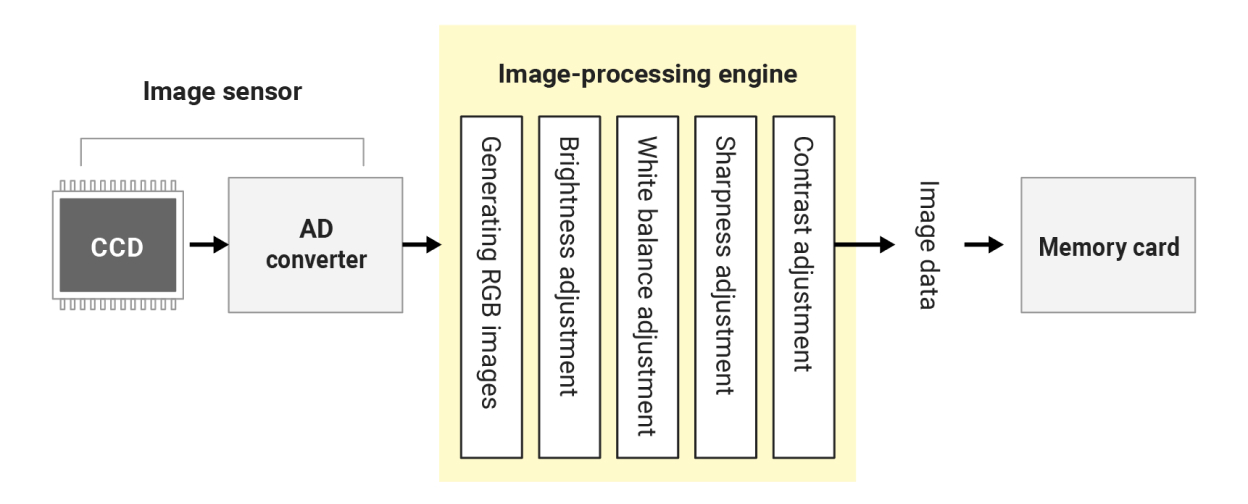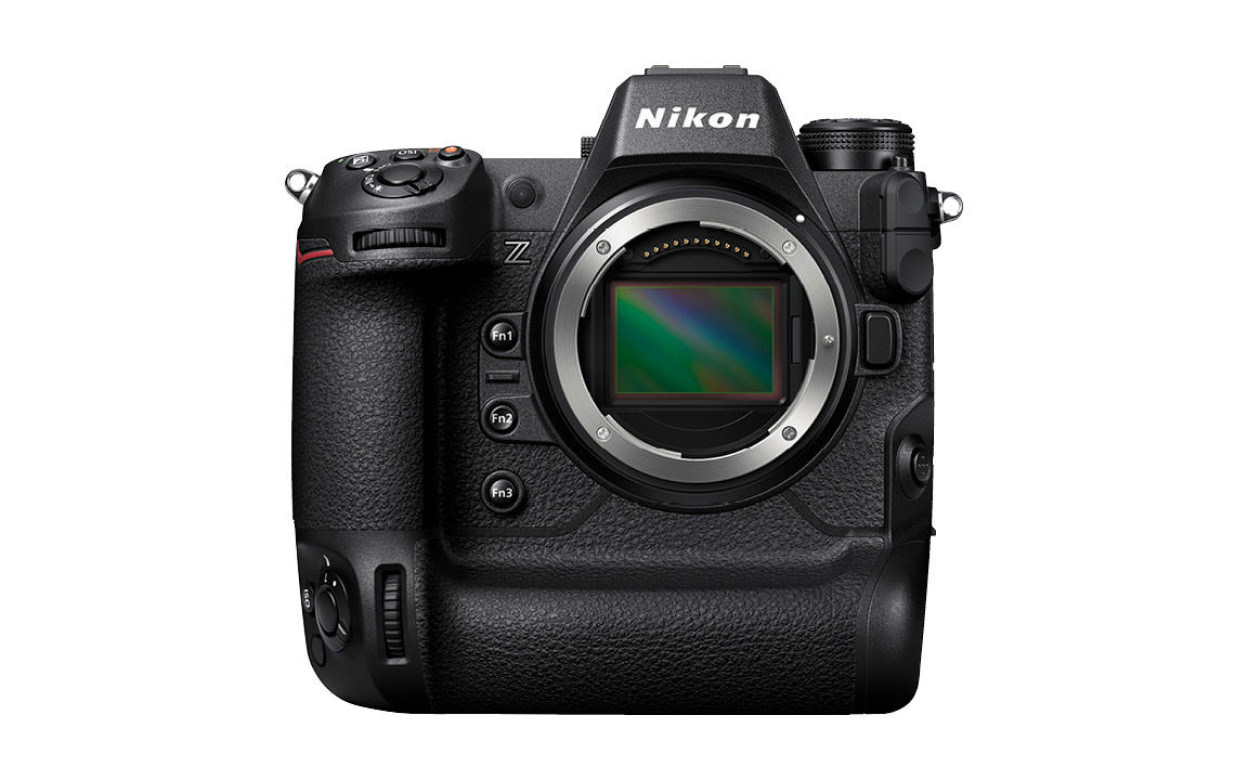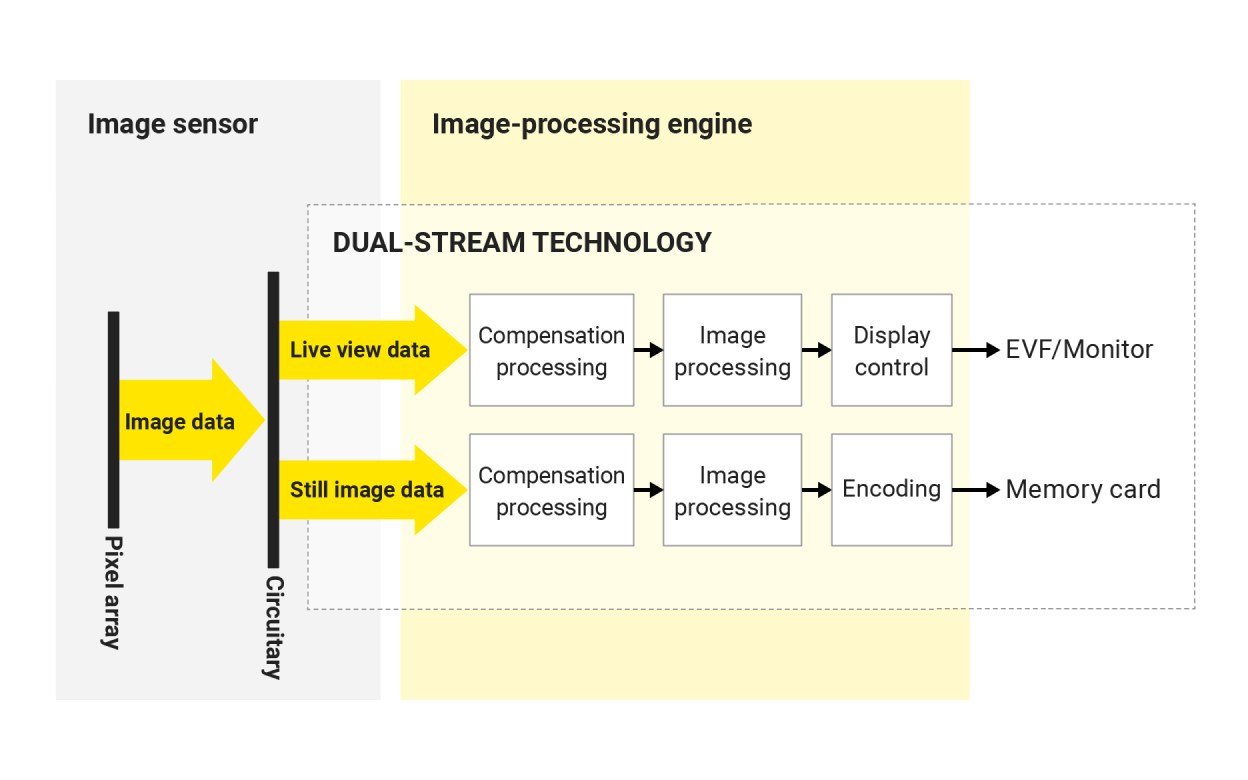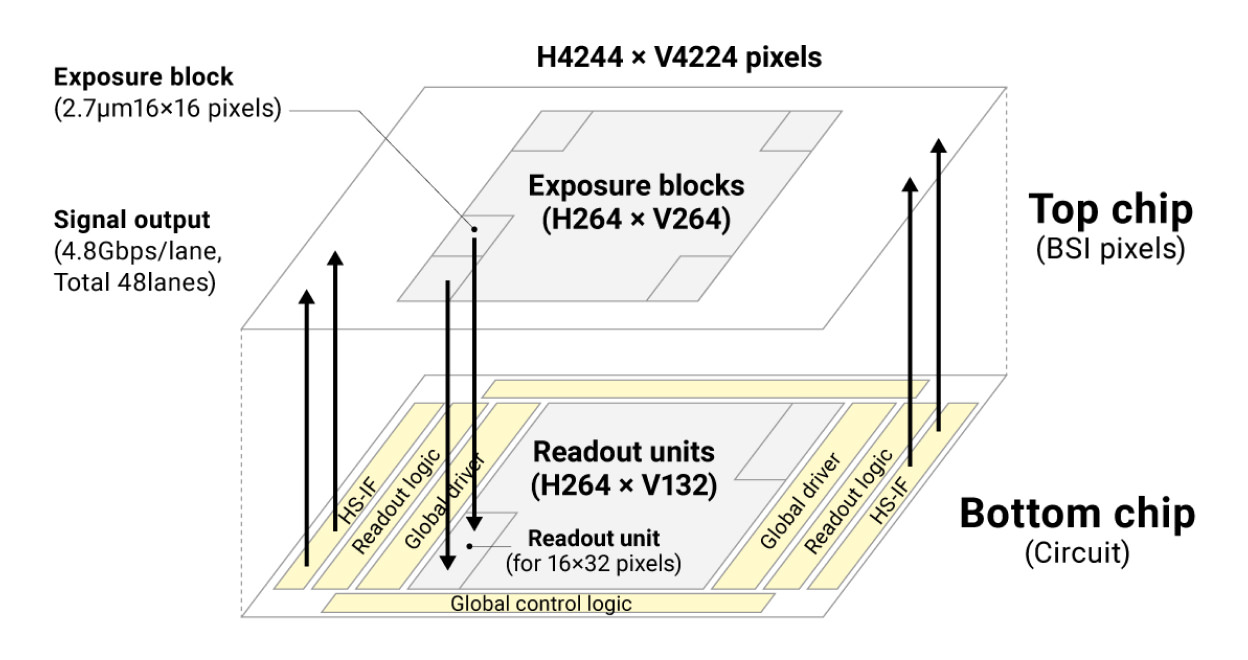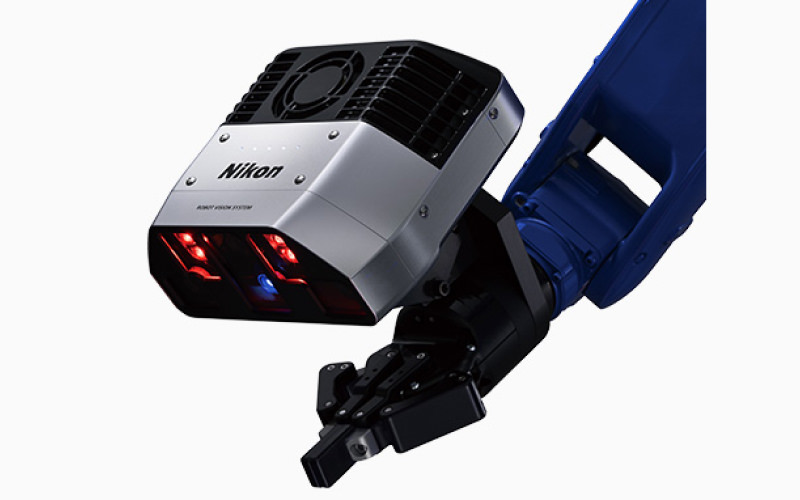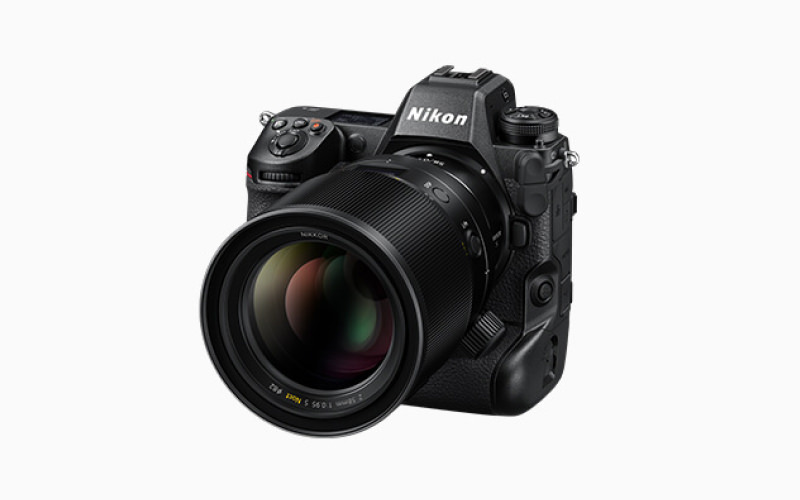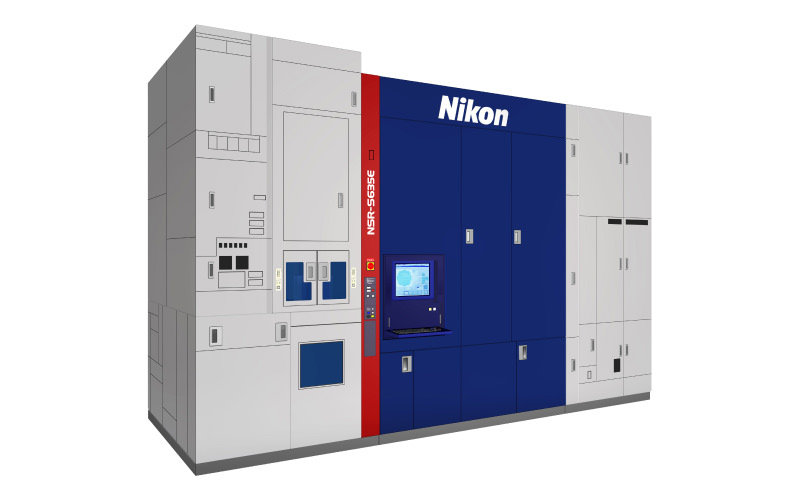Image-Processing Engine
Technology Overview
The image-processing engine, a computing device dedicated to image processing, quickly converts the electrical signals obtained from the image sensor into image data and outputs it.
The main image processing procedures include noise reduction, color correction, and contrast adjustment automatically and at high speed. Generally, a full-color image data is obtained by interpolating the red (R), green (G), or blue (B) signals obtained at each pixel within the sensor to calculate the RGB values for each pixel. Spatial filtering is used to reduce noise caused by the sensor, and gamma correction is performed to reproduce the intended color tone. These processes can be programmed as software or directly programmed into electrical circuits for high-speed processing.
Image-processing engines, which are mainly built into digital cameras, need to process image data at high speed based on various set conditions so that users can capture the moment they want. Designs that also take into account the effects of heat generated by processing large amounts of data at high speeds are required.
Technology Application Examples
Camera Z 9
The Z 9 is a camera with a viewfinder which reveals every single moment including those previously blocked by conventional electronic viewfinder systems and loss of view caused by the mirror-up of D-SLRs. Unlike conventional blackout-free shooting where the same frames are repeated, the Real-Live Viewfinder displays a subject's action as it is. This enables you to smoothly confirm every single movement of an athlete and find the very best moments. The Real-Live Viewfinder is realized by Nikon's newly developed dual-stream technology. It separately processes live-view images (including EVF view) and still images to be recorded.
Click to enlarge
Technologies related to these examples
Related Technology
Electrical and Electronic Control
Many control devices use electronic circuits and operate according to electrical signals. Typically, the system status is obtained as an electrical signal from a sensor, and a signal is sent to instruct a component such as the drive system to bring the system to the desired state. By properly configuring electrical and electronic circuits, high-speed control can be achieved.
Most products offered by Nikon are electronically controlled. Cameras feature not only autofocus but the ability to set aperture and shutter conditions automatically according to the user’s desired conditions, rather than having the user do so manually. Image sensors also require circuit designs that enable high-speed readout across a high dynamic range.
Main Related Products
You can search for articles related to Nikon’s technology, research and development by tag.

